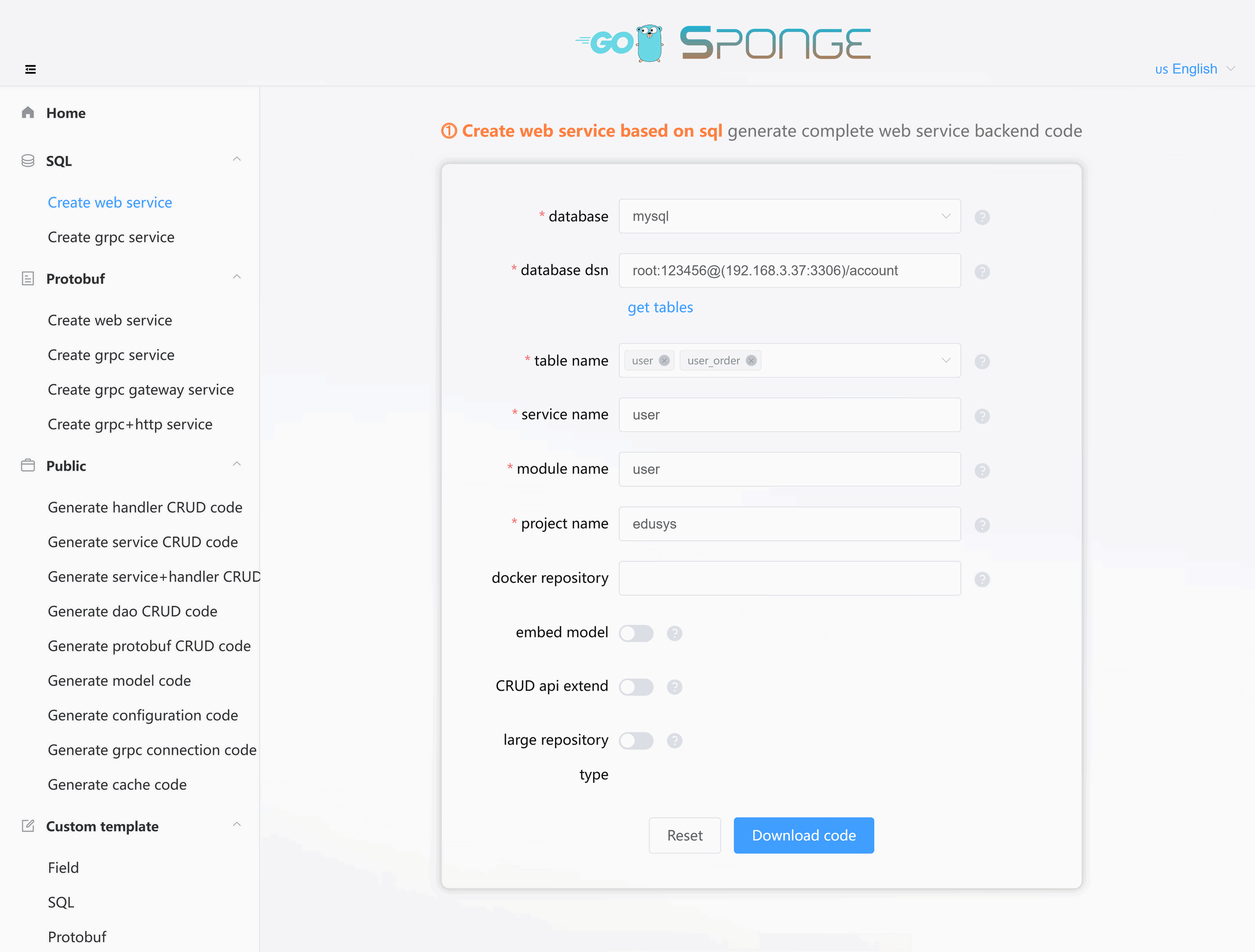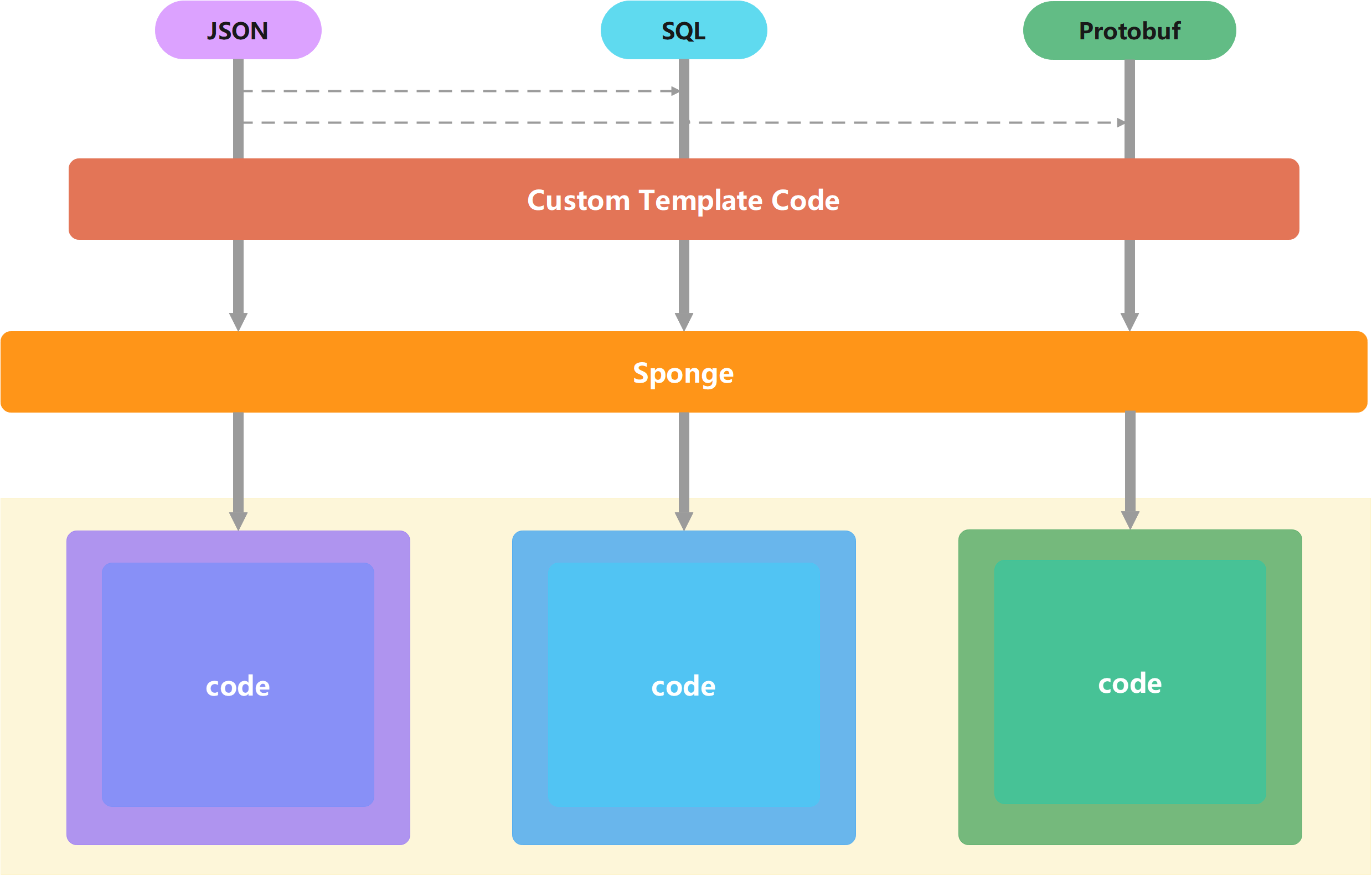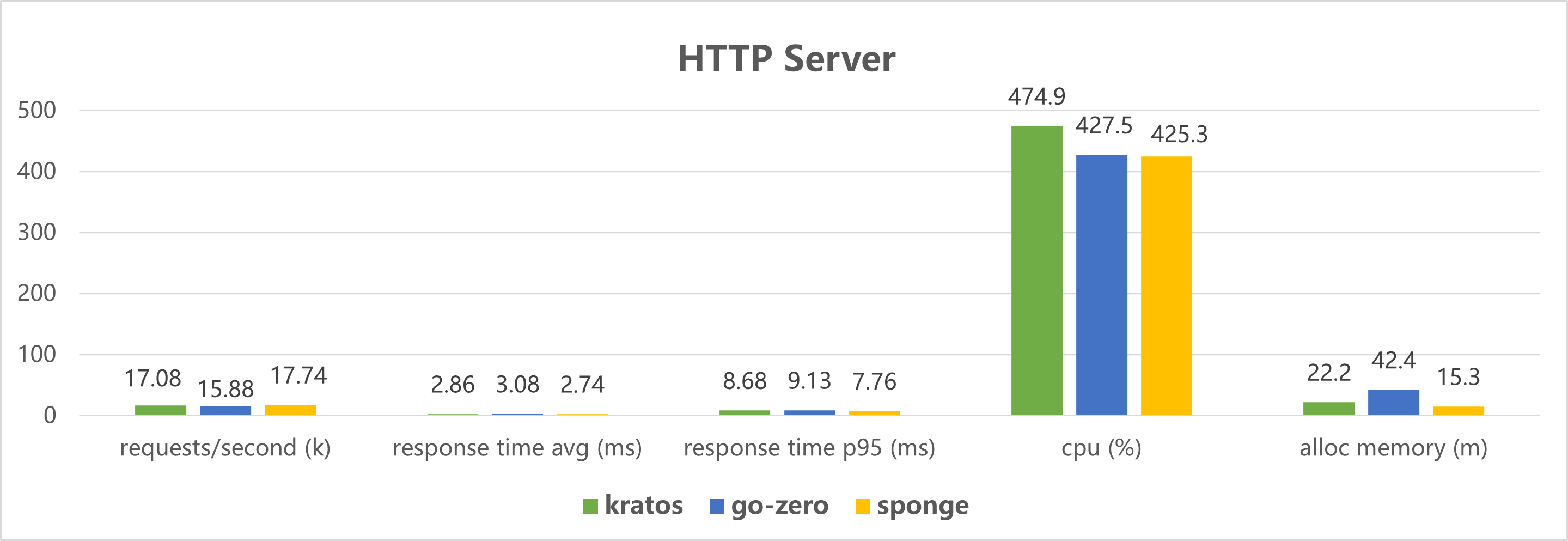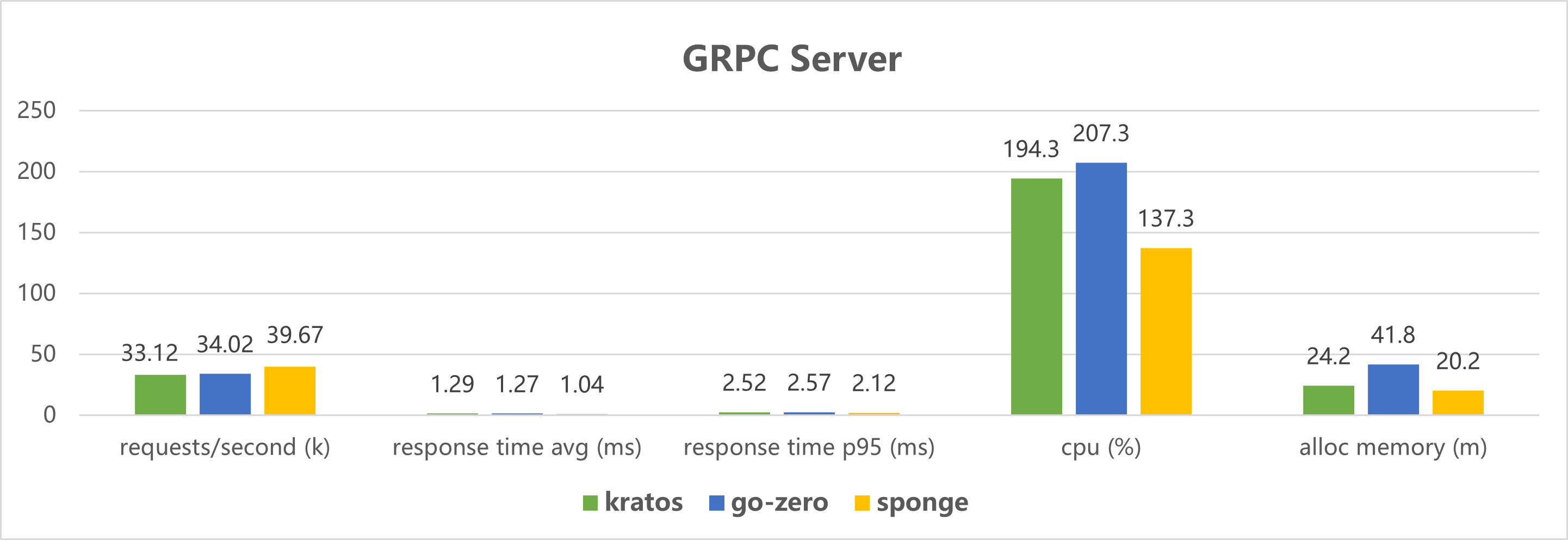English | 简体中文
Sponge is a powerful and easy-to-use Go development framework. Its core concept is to reverse-generate modular code by parsing SQL, Protobuf, and JSON files. These modular components can be flexibly combined into various types of complete backend services.
Sponge provides a one-stop project development solution with outstanding engineering capabilities. It covers code generation, development, testing, API documentation, and deployment, enabling developers to effortlessly build stable, reliable, and high-performance backend service systems (including RESTful API, gRPC, HTTP+gRPC, and gRPC Gateway, etc) with a low-code approach.
Sponge is ideal for rapidly building various types of high-performance backend services. Applicable scenarios include:
- Developing RESTful API services
- Building microservices projects
- Cloud-native development
- Refactoring old projects
- Serving as a starting point for Go beginners or teams to learn Go project structure and best practices
In addition, developers can generate business-specific code by customizing templates.
-
One-click generation of complete backend service code
ForWeb,gRPCorHTTP+gRPCservices that only requireCRUD APIs, noGocode needs to be written. Simply connect to a database (e.g.,MySQL,MongoDB,PostgreSQL,SQLite) to one-click generate complete backend service code and easily deploy it to Linux servers, Docker, or Kubernetes. -
Efficient development of general-purpose services
When developing general-purposeWeb,gRPC,HTTP+gRPC, orgRPC Gatewayservices, you only need to focus on three aspects:- Defining database tables;
- Defining API descriptions in Protobuf files;
- In the generated templates, use built-in AI assistants or manually write business logic code.
The framework code and CRUD API code are all automatically generated by sponge.
-
Support for custom templates, offering flexible extensibility
Sponge supports generating various types of project-specific code using custom templates, not limited to theGolanguage. For examplebackend code,frontend code,test code,build and deployment scripts, etc. -
Generate code on the page, simple and easy to use
Sponge provides code generation on the page, avoiding complex command-line operations, simply filling in parameters on the page to generate code with one click. -
Sponge and AI Assistant Collaborative Development to Form a Closed-Loop Workflow
Sponge, combined with built-in AI assistants (DeepSeek, ChatGPT, Gemini), forms a complete and efficient development solution:- Sponge: Responsible for infrastructure code generation, including
service framework,CRUD API,custom API (lacking business logic), etc. - AI assistant: Focuses on business logic implementation, including
table structure DDL design,custom API design,business logic, etc.
- Sponge: Responsible for infrastructure code generation, including
-
Install sponge
Sponge supports installation on Windows, macOS, Linux and Docker. Click to view the sponge installation guide.
-
Open the code generation UI
After installation, run the following command to open the sponge UI:
sponge run
Access
http://localhost:24631in a local browser to generate code through the UI interface, as shown below:To access from a browser on a different host, specify the host IP or domain when starting the UI, e.g.,
sponge run -a http://your_host_ip:24631.
Sponge has built-in rich components (for on-demand use):
Sponge offers powerful code generation capabilities, supporting both built-in templates and custom templates to quickly generate the code required for your project. It also integrates an AI assistant to help generate business logic code.
- Sponge generates a code framework based on built-in templates, as shown in the diagram below:
- Sponge generates a code framework based on custom templates, as shown in the diagram below:
- Sponge generates a business logic code framework based on functions and comments, as shown in the diagram below:
Sponge is a modern Go microservice framework that adopts a typical layered microservice architecture. It comes with a rich set of built-in service governance features, enabling developers to quickly build and maintain complex microservice systems. The structure of the framework is shown in the diagram below:
Performance testing of http and grpc service code created by the microservices framework: 50 concurrent, 1 million total requests.
Click to view the test code.
The project code directory structure created by sponge follows the project-layout.
Sponge supports creating three types of project code structures: Monolithic application monorepo (monolith), Microservices multi-repo (multi-repo), and Microservices monorepo (mono-repo).
-
The code directory structure for creating a
Monolithic application monorepo (monolith)orMicroservices multi-repo (multi-repo)is as follows:. ├── api # Protobuf files and generated * pb.go directory ├── assets # Store various static resources, such as images, markdown files, etc. ├── cmd # Program entry directory ├── configs # Directory for configuration files ├── deployments # Bare metal, docker, k8s deployment script directory. ├── docs # Directory for API interface Swagger documentation. ├── internal # Directory for project internal code. │ ├── cache # Cache directory wrapped around business logic. │ ├── config # Directory for Go structure configuration files. │ ├── dao # Data access directory. │ ├── database # Directory for database initialization and migration. │ ├── ecode # Directory for system error codes and custom business error codes. │ ├── handler # Directory for implementing HTTP business functionality (specific to web services). │ ├── model # Database model directory. │ ├── routers # HTTP routing directory. │ ├── rpcclient # Directory for client-side code that connects to grpc services. │ ├── server # Directory for creating servers, including HTTP and grpc. │ ├── service # Directory for implementing grpc business functionality (specific to grpc services). │ └── types # Directory for defining request and response parameter structures for HTTP. ├── pkg # Directory for shared libraries. ├── scripts # Directory for scripts. ├── test # Directory for scripts required for testing services and test SQL. ├── third_party # Directory for third-party protobuf files or external helper programs. ├── Makefile # Develop, test, deploy related command sets . ├── go.mod # Go module dependencies and version control file. └── go.sum # Go module dependencies key and checksum file.
-
The code directory structure for creating a
Microservices monorepo (mono-repo)(large repository code directory structure) is as follows:. ├── api │ ├── server1 # Protobuf files and generated *pb.go directory for service 1. │ ├── server2 # Protobuf files and generated *pb.go directory for service 2. │ ├── server3 # Protobuf files and generated *pb.go directory for service 3. │ └── ... ├── server1 # Code directory for Service 1, it has a similar structure to the microservice multi repo directory. ├── server2 # Code directory for Service 2, it has a similar structure to the microservice multi repo directory. ├── server3 # Code directory for Service 3, it has a similar structure to the microservice multi repo directory. ├── ... ├── third_party # Third-party protobuf files. ├── go.mod # Go module dependencies and version control file. └── go.sum # Go module dependencies' checksums and hash keys.
Click to view Sponge Documentation, which covers core content such as code generation, development process, system configuration and deployment plan in detail.
- Create web service based on sql (including CRUD)
- Create grpc service based on sql (including CRUD)
- Create web service based on protobuf
- Create grpc service based on protobuf
- Create grpc gateway service based on protobuf
- Create grpc+http service based on protobuf
If it's help to you, give it a star ⭐.









